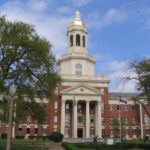FAQs About Neuroscience Curriculum: Real Students’ Stories
This article is a first-person account by Moriah Kofsky, a CollegeVine livestream contributor. You can watch the full livestream for more info.
What’s Covered:
- Is Studying Neuroscience Ever Boring?
- How Are Neuroscience Courses Structured?
- What Are Popular Neuroscience Courses?
- How Much Time Do Neuroscience Majors Spend in Labs?
Is Studying Neuroscience Ever Boring?
This answer depends on the student and their interests. Naturally, each person majoring in neuroscience will have their area of interest. There might be some classes that suit your desired career path and others that you simply have to take as requirements. For example, the general courses that you must take in your freshman and sophomore years are basic biology, chemistry, and physics. Many students find the material in these intro classes fairly dry because they are quite similar to high school AP classes.
But once you get through the first couple of years of the required neuroscience courses, you can choose which classes you want to take. There will be a structure to how this works with your major, but most of it will be customizable to your interests.
How Are Neuroscience Courses Structured?
The structure of a neuroscience course can depend on many different factors, including the subject, professor, and university. Most classes will be lecture based, especially the general courses that all students must complete during their first two years. These tend to take place in large lecture halls with many students and almost always have a supplementary lab session. The general requirement labs will be fairly basic, but the ones that you take later in your major will be unique and more interesting.
Once you get your general requirements out of the way, your specialized classes will be a mix of lecture and writing-intensive courses. You will also get to experience research classes, which will help you determine the area of neuroscience that you want to explore. The purpose of all these different types of courses, research, and labs is for neuroscience majors to get exposure to the various career paths available to them.
What Are Popular Neuroscience Courses?
The classes that each student likes mainly depend on their interests. If there is an area of neuroscience that particularly intrigues you, you’re more likely to enjoy the class, no matter how hard it is. A general consensus among neuroscience majors is that the best classes will be challenging but not absurdly difficult. Many of the classes that you take in your junior year of college will be intro courses for a specialized area of neuroscience. These cover a certain niche, and they are difficult because of how specific they are, but they are still introductory classes.
Research classes that involve a significant amount of time in the lab or reading past research papers tend to be favorites. The courses are more hands-on and purposeful compared to the large lecture-based classes. However, preference is entirely based on a student’s experience.
How Much Time Do Neuroscience Majors Spend in Labs?
Many of the classes that you take as a neuroscience major will involve lab time, especially if you are in a research-based course. Lab time tends to be anywhere from two to five hours a week for each class. For example, if you are in three research-based neuroscience classes, you should expect to spend anywhere from six to 15 hours in the lab a week. This is a serious amount of time spent outside of the classroom, so when you build your semester’s class schedule, make sure to take lab time into account.
